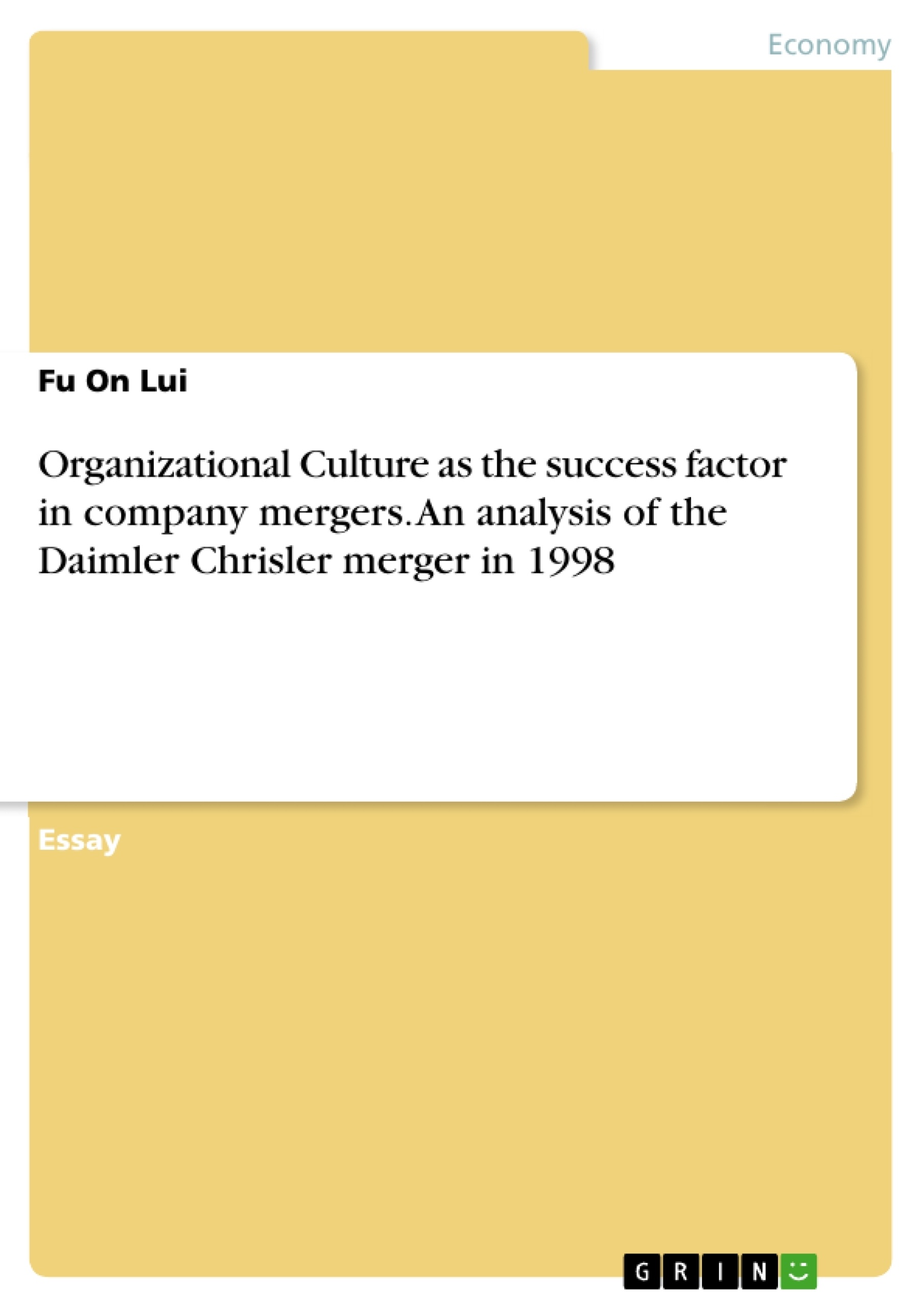Organizations aim to get collaborative advantages by establishing relationships with other, often foreign organizations to stay competitive in an increasingly globalised environment. Badrtalei and Bates (2007) state that partnerships, of any form, be they mergers, acquisitions or joint ventures are a viable strategic option to achieve the objectives of growth, diversification, economics of scale, synergy of a global presence.
Many of these collaborations surprisingly fail to achieve the intended benefits. In this essay, the merger and acquistion of the German Daimler-Benz AG and the American Chrysler Corporation will be discussed.
Inhaltsverzeichnis (Table of Contents)
- Introduction
- Background of Daimler
- Central Issue - DaimlerChrysler M&A
- Theoretical Frameworks - Geert Hofstede
- Geert Hofstede's 5 dimensions
- Cultural issues of DaimlerChrysler under the Hofstede's framework
- Theoretical Frameworks - Schein
- Edgar Schein's Levels of Culture
- Cultural issues of DaimlerChrysler under the Schein's framework
- Conclusion
Zielsetzung und Themenschwerpunkte (Objectives and Key Themes)
This paper investigates the DaimlerChrysler merger in 1998, aiming to analyze the cultural factors that contributed to its failure. The analysis focuses on applying the theoretical frameworks of Hofstede (2001) and Schein (1984) to understand the cultural dynamics at play.
- Impact of organizational culture on mergers and acquisitions
- Cultural compatibility as a barrier to successful integration
- Analysis of DaimlerChrysler's cultural differences through Hofstede's and Schein's frameworks
- Importance of understanding cultural components for successful mergers
- The role of cultural alignment in achieving merger success
Zusammenfassung der Kapitel (Chapter Summaries)
- Introduction: This chapter introduces the topic of mergers and acquisitions, highlighting the increasing importance of cross-border collaborations in a globalized business environment. It also emphasizes the high failure rate of such ventures and the importance of cultural compatibility. The DaimlerChrysler merger is introduced as a case study to investigate the impact of cultural factors on the success of such initiatives.
- Background of Daimler: This chapter provides a brief history of Daimler, highlighting its long-standing reputation for producing high-quality luxury vehicles. The chapter also mentions the company's global presence and its large workforce.
- Central Issue - DaimlerChrysler M&A: This chapter describes the DaimlerChrysler merger in 1998, highlighting the distinct differences between Daimler and Chrysler. It also mentions the merger's motivations, including cost-saving measures and the pursuit of growth in both established and emerging markets. The chapter concludes by emphasizing the role of cultural factors in the merger's eventual failure.
- Theoretical Frameworks - Geert Hofstede: This chapter introduces Hofstede's cultural framework, emphasizing its use in understanding the cultural differences within organizations. The chapter then explores the five dimensions of Hofstede's framework, focusing on power distance, uncertainty avoidance, and masculinity/femininity. It also mentions some of the criticisms directed at Hofstede's approach.
Schlüsselwörter (Keywords)
This paper focuses on mergers and acquisitions, organizational culture, cross-border collaborations, DaimlerChrysler merger, cultural compatibility, Hofstede's cultural dimensions, Schein's levels of culture, and the role of cultural factors in merger success.
- Citar trabajo
- Fu On Lui (Autor), 2012, Organizational Culture as the success factor in company mergers. An analysis of the Daimler Chrisler merger in 1998, Múnich, GRIN Verlag, https://www.grin.com/document/342809



